Notable changes in the 2023 edition of NFPA 25 cover antifreeze fire sprinkler systems, sprinkler testing intervals, foam fire suppression systems, and more
NFPA 25: Standard for the Inspection, Testing, and Maintenance of Water-Based Fire Protection Systems is one of the National Fire Protection Association’s most important documents. It governs the upkeep of fire sprinklers and standpipes, among other systems, and is enforced as law in many jurisdictions. The fire protection industry is dynamic and constantly changing. So, NFPA periodically updates standards to address new issues, improve upkeep, and clear up confusion from previous editions.
The NFPA 25 committee recently released the 2023 edition of the document. This version, which replaces the 2020 edition, includes many changes. This article explains many notable NFPA 25 changes, including:
- A list of notable new and revised definitions
- Responsibilities of the property owner and some safety procedures
- Changes to the fire sprinkler test calendar
- An important change to the rule about when to replace painted sprinklers
- A concise list of cases where you must replace a sprinkler
- Rules about the use of nitrogen in dry/preaction systems
- Inspection procedures for sprinkler guards
- New rules for antifreeze systems clearing up a significant source of confusion
- Additions to a chapter that now covers the inspection, testing, and maintenance (ITM) of foam systems
Unfortunately, we can’t cover all of the changes in the latest edition. But this blog summarizes many of the ones we believe are important, useful, or just interesting!
If you need equipment to maintain your fire sprinkler or standpipe system, check out QRFS’s online selection of fire sprinklers and accessories, fire department connections and accessories, testing and monitoring equipment, and more.
Updated & new definitions
One of the most important parts of NFPA 25 — and other NFPA model codes and standards — is the definitions chapter that explains what various fire protection terms mean. The 2023 edition includes a few updated definitions in Chapter 3:
Exercise
“Exercise” is used throughout editions of NFPA 25 to describe actions that test the function of various devices, including valves, backflow preventers, automatic transfer switches, and other equipment. But the verb never had a specific definition until this latest update. It’s pretty straightforward:
3.3.12 A particular movement or series of movements applied to system components to ascertain their operational status and functionality.
When someone flows water or moves a device through a range of motion sufficiently to see if it works, they are “exercising” it.
Water control valves
The NFPA 25 committee has added a specific “water control valve” definition to clarify some confusion. UL specifically classifies dry valves, preaction valves, and deluge valves as “water control valves,” so these devices’ placards or castings often have those words.
Thus, NFPA 25 has added a new definition (3.5.9), taken from the 2022 edition of NFPA 13, that reflects what’s meant by “water control valve:” “A valve that activates to allow water flow to a water-based fire protection system.”
Who is “qualified” to do fire protection ITM?
NFPA 25 changes include using the word “personnel” in the definition of who is qualified to do ITM work, along with a subsequent plural:
3.3.35* Qualified Personnel. Competent and capable individual(s) having met the requirements and training for a given field acceptable to the AHJ.
It’s a minor change that accounts for the reality that multiple individuals conducting ITM may be qualified. And there’s more detail on what makes them “qualified” in our next section!
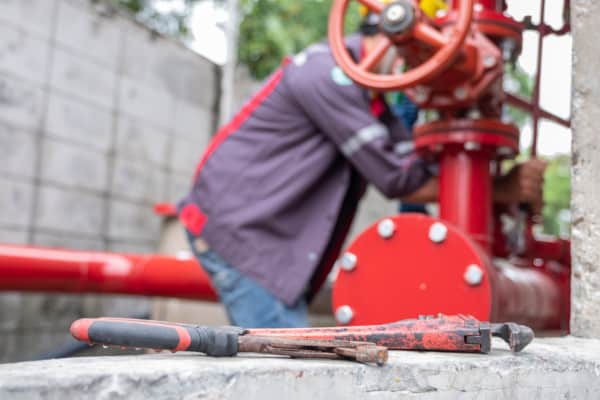
Administrative updates and requirements for property owners
Property owners are responsible for maintaining their fire protection systems. But because most aren’t fire protection experts, qualified representatives—owners’ employees and/or fire protection contractors—act on their behalf. The 2023 edition has a few updates to the administrative requirements for owners, representatives, and contractors.
Responsibilities of the owner
The first update is just an addition of some text to section 4.1.1. The 2020 edition said that owners or representatives “shall be responsible for properly maintaining a water-based fire protection system.” But the 2023 edition clarifies what “properly maintaining” really means. The added text is bolded: they are responsible “for the proper inspection, testing, maintenance and impairment management of water-based fire protection systems in accordance with this standard.”
The 2023 edition also adds a small note (4.1.1.2) about keeping and referencing various equipment manufacturers’ literature for installed equipment. NFPA standards often defer to manufacturer instructions for proper upkeep, so it makes sense to require owners to keep the instructions available. Here’s some text from the standard explaining the revision:
As stated in Chapter 1, the requirements found in NFPA 25 are minimum requirements. Along with those minimum requirements, as indicated in this section, ITM requirements found in the manufacturer’s instructions must be followed as well.
Qualified personnel
As mentioned in the definitions section above, ITM work must be done by qualified personnel. NFPA 25 has always been purposely vague on the exact definition of “qualified,” however. Each jurisdiction and authority having jurisdiction (AHJ) may have specific requirements, and NFPA 25 often defers to the AHJ.
Nevertheless, the recent update adds a list of ways (4.1.1.3.1) that a person can become qualified:
4.1.1.3.1* Qualified personnel shall meet at least one of the following qualifications:
(1) Meets the requirements and training for a given field acceptable to the authority having jurisdiction
(2) Is certified by a nationally recognized fire protection certification organization acceptable to the authority having jurisdiction [e.g., NICET]
(3) Is registered, licensed, or certified by a state or local authority to perform inspection, testing, and maintenance of water-based fire protection systems
That said, the commentary in the 2023 edition explains that defining “qualified personnel” is still the job of the AHJ. As covered by option one, local authorities still specify the training, certification, or licensure required to perform different ITM tasks.
Check out our previous article on how to find a qualified sprinkler or standpipe contractor.
Scheduled shutdowns, accessibility, and safety
Some of the regular ITM tasks required by NFPA 25 aren’t always safe or convenient, especially in industrial environments. Machinery and equipment can prevent inspectors from accessing some sprinkler heads for annual inspections, for instance. In such cases, NFPA 25 allows inspectors to defer inspections until scheduled shutdowns.
In previous editions, this information was scattered throughout different NFPA chapters and sections governing specific types of fire protection infrastructure. But the 2023 edition added section 4.9.7, which applies this rule to all equipment not accessible because of safety considerations. Under the new guidance (4.9.7.1 to 4.9.7.3):
- Inspection of equipment installed inaccessible for safety reasons due to operations should be done during scheduled shutdowns
- If the AHJ approves it, testing of equipment inaccessible for safety reasons can be delayed until scheduled shutdowns
- If approved by the AHJ and based on the results of a risk assessment, inspection and testing activities can be temporarily delayed for the sake of personnel safety
Adding this section ensures that the rules about scheduled shutdowns and delayed ITM are applied to all situations where there might be a danger to inspectors caused by routine operations.
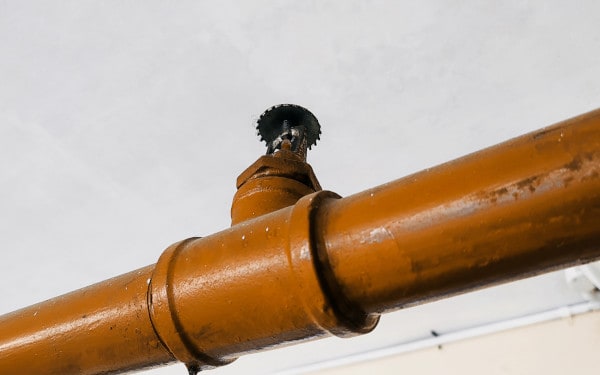
Testing old fire sprinklers: changes for fast-response, dry, and listed corrosion-resistant sprinklers
The new NFPA 25 has some critical updates to section 5.3.1 governing how and when fire sprinklers must be lab-tested or replaced. Fire sprinkler testing involves draining the system and removing a representative sample of sprinklers that are sent to a laboratory. The lab attempts to force sampled heads to operate in a special test oven to determine if the system’s sprinklers work properly or need to be replaced. You can read more about this process in our previous blog.
Some NFPA 25 changes to section 5.3.1 reflect new data about the long-term durability of installed sprinklers. Others are simple clarifications of procedures.
Procedural clarifications
In the 2020 edition, Annex A explained that the samples you take from a sample area should include every type of sprinkler and every sprinkler manufacturer found in the area. But the Annex is just explanatory material and isn’t enforceable. The 2023 edition moves this requirement to the main body of the code, making it a ‘must.’ NFPA 25 now says:
5.3.1.2.1 Each sprinkler type and manufacturer in the sample area shall be represented in the sample.
One way to work with this newly mandatory rule could be to make each sprinkler type in the sample area its own sample. For example, one might test samples of the upright sprinklers and pendent sprinklers in an area separately. In that case, if an upright fails but the pendents do not (or vice versa), the latter group doesn’t also have to be replaced. Subdividing sample areas is an old approach with a new application in light of this added section.
Additionally, the NFPA committee added an explicit requirement that should be common sense: if a sprinkler was newly installed after a previous lab test, you can’t use it in the sample for another round of testing. These assessments are for old sprinklers only!
5.3.1.2.2 Sprinklers tested shall not include any sprinklers that were replaced at prior testing intervals.
Fast-response sprinklers (with exceptions) and dry sprinklers are deemed more reliable
In earlier editions of NFPA 25, the timeline for testing fast-response sprinklers started 20 years after installation (compared to 50 years for a standard response sprinkler). But years of data have revealed that, in general, fast-response bulbs are more reliable than estimated.
So, fast response sprinkler testing now starts at 25 years (5.3.1.1.1.1) after installation (and every 10 years afterward) with two exceptions. Early suppression fast response (ESFR) sprinklers and the fast-response versions of control-mode special application (CMSA) sprinklers are still tested or replaced at a 20-year interval (5.3.1.1.1.2), followed by retests every 10 years.
The committee made a similar move with dry sprinklers, as dry heads and systems are more prone to failure than wet versions. In past editions, NFPA 25 required testing of dry sprinkler heads starting 10 years after installation. But the commentary in the 2023 edition explains that dry sprinkler technology has improved, and the industry knows more about how and when failures occur. As such, NFPA 25 has steadily relaxed the rules. The 2020 edition changed the initial testing interval for dry sprinklers to 15 years, and the 2023 edition bumped it up again:
From the 2023 edition of NFPA 25
5.3.1.1.1.5 Where dry sprinklers have been installed for 20 years, one of the following shall occur:
(1) The sprinklers shall be replaced.
(2) Representative samples of the sprinklers shall be tested and then retested every 10 years.
Fire sprinkler testing is usually a disruptive and costly procedure, so safely postponing it for these common sprinkler types is a significant benefit for building owners.
In addition, the standard now specifies a five-year re-test period after an initial 10-year test for listed corrosion-resistant sprinklers “installed in harsh environments.” The previous edition of NFPA 25 just said “on a 10-year basis.” (5.3.1.1.3)
There are numerous other small text changes in section 5.3.1 that attempt to clarify testing. For a rundown of all the latest rules, check out our other blog on fire sprinkler testing.
Paint “detrimental to sprinkler performance”
NFPA 25’s requirements for an annual fire sprinkler inspection, found in section 5.2.1.1.1, are crucial for ensuring sprinkler heads work. Sprinklers should be visually inspected from the floor level for problems, including leaks, corrosion, physical damage, loss of bulb fluid, loading (with dust and dirt), and paint not applied by the manufacturer. A sprinkler must be replaced if any of these issues are discovered — to varying degrees.
The 2023 update added a key phrase to the line about aftermarket paint (emphasis added):
5.2.1.1.1 (6) Paint other than that applied by the sprinkler manufacturer, detrimental to sprinkler performance
Adding the words “detrimental to sprinkler performance” is a significant change, and the 2017 edition of NFPA 25 first applied this language to corrosion and loading, but not paint. So, a literal reading of an earlier edition meant that any amount of paint on any part of a sprinkler (or loading or corrosion) triggered replacement. This latest update recognizes that not all paint (in addition to corrosion or loading) means a sprinkler won’t activate or distribute water properly. The 2023 Annex explains:
A.5.2.1.1.1 […] Sprinklers having limited corrosion, loading, or paint in locations on the sprinkler that are not expected to impact the operation or water distribution characteristics can continue to be used.
There is a difference, the NFPA 25 committee recognizes, between paint splatter on the heat-sensitive element of a sprinkler that could delay its activation — or paint gumming up the deflector, blocking its spray pattern — vs. a drop or two of paint elsewhere on the frame. The 2023 revision gives inspectors the discretion and responsibility to make judgment calls about whether aftermarket paint will impact performance.
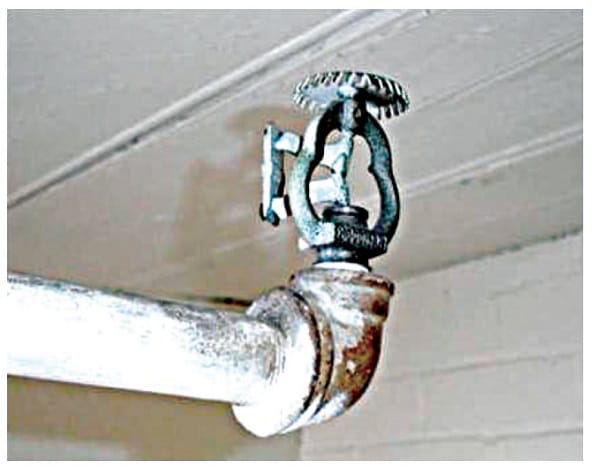
When to replace sprinklers: aggregating the rules in one spot
NFPA 25 requires replacing fire sprinklers in several circumstances. We’ve mentioned some of them already in this article: if they fail the 6-point annual visual inspection for problems, and if they fail the laboratory test.
There are two other conditions (bolded below), each previously scattered in different sections of the standard. In the 2023 edition, a new section lists all the replacement conditions in one spot:
5.4.1.1 Replacement Sprinklers.
Sprinklers with any of the following qualifications shall be replaced:
(1) Sprinklers manufactured prior to 1920.
(2) Sprinklers showing signs described in 5.2.1.1.1.
(3) Sprinklers with unsatisfactory performance when tested in accordance with 5.3.1.
(4) Sprinklers affected by a fire as determined by the AHJ.
None of this is new information, but it’s a concise restatement of all the conditions where you must replace fire sprinklers.
Check out our previous blog for more information about sprinkler replacement, including how the process works.
Nitrogen in dry and preaction systems: NFPA 25 changes to match NFPA 13
The 2023 edition of NFPA 25 has a new section related to using nitrogen in preaction and dry sprinkler systems. The committee added it to address an update to NFPA 13: Standard for the Installation of Sprinkler Systems in that document’s 2022 edition. Specifically, NFPA 13 now gives designers a hydraulic advantage for using nitrogen instead of air in dry and preaction systems. Unlike compressed air, nitrogen is inert—it alone cannot contribute to pipe wall oxidation. Thus, using a high nitrogen mix instead of air means that the pipe walls stay smoother longer.

The smoothness of a pipe wall (aka its friction-loss coefficient) plays a big part in sprinkler system design. NFPA 13’s latest table of friction-loss coefficients (“C-value”) now includes entries for “black steel with nitrogen” and “galvanized steel with nitrogen.” We’ve reproduced Table 28.2.4.8.1 in NFPA 13 below so you can compare the C-values for different types of pipe. Remember, a bigger number means smoother pipes, which is better.
NFPA 13 Table 28.2.4.8.1 Hazen–Williams C Values
| Pipe or Tube | C Value |
|---|---|
| Unlined cast or ductile iron | 100 |
| Black steel (dry systems including preaction) | 100 |
| Black steel (wet systems including deluge) | 120 |
| Black steel (dry system including preaction) using nitrogen | 120 |
| Galvanized steel (dry systems including preaction) | 100 |
| Galvanized steel (wet systems including deluge) | 120 |
| Galvanized steel (dry systems including preaction) using nitrogen | 120 |
| Plastic all (listed) | 150 |
| Cement-lined cast- or ductile iron | 140 |
| Copper tube, brass, or stainless steel | 150 |
| Asbestos cement | 140 |
| Concrete | 140 |
So, how does this relate to NFPA 25 changes? The 2023 edition now says that if a nitrogen supply cannot be maintained or repaired, it must be replaced with a new nitrogen system that meets the original NFPA 13 design requirements.
To some people, it might seem trivial to replace a nitrogen supply with another compressed-gas source. But when a system is designed based on C-values that depend on using nitrogen, you have to stick with nitrogen.
Here’s the new section:
4.1.4.3 Where a nitrogen supply is used as part of the dry pipe or preaction system design in accordance with NFPA 13, it shall be maintained, repaired, or replaced with a nitrogen supply capable of maintaining design concentrations.
New requirement: annual inspection of sprinkler guards
Sprinkler guards are cages that protect sprinklers from physical damage without obstructing water flow. They are useful in environments such as warehouses, gyms, schools, and grocery stores where impacts are more common. Like escutcheons and cover plates, sprinkler guards are tested and listed as part of complete sprinkler assemblies. Specific guards are designed for particular sprinklers.
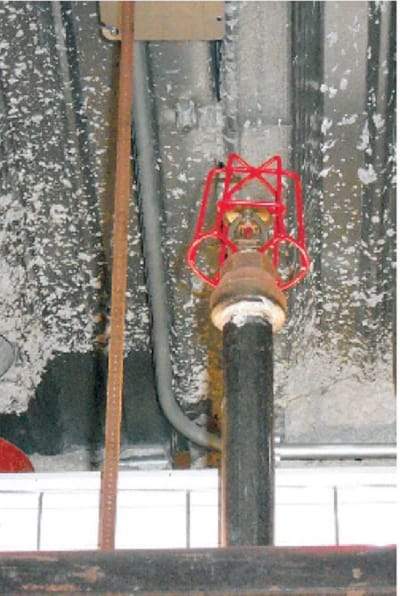
Perhaps surprisingly, past editions of NPFA 25 did not mention all sprinkler assemblies in the inspection schedules—possibly assuming that users would follow the rules for escutcheons. After all, sprinkler guards are installed similarly. But the 2023 edition adds new wording to address this item:
5.2.1.1.7.1 Where installed, a sprinkler guard shall be inspected from the floor level annually.
5.2.1.1.7.2 A damaged sprinkler guard shall be replaced with a guard listed for the sprinkler.
Like the visual inspection of sprinklers or escutcheons, the guard inspection happens annually and from the floor level.
NFPA 25 changes for antifreeze fire sprinkler systems
One of the most complicated topics in NFPA 25 governs using antifreeze. Several tragic incidents showed that flammable antifreeze additives could combust as they spray from a sprinkler if they are improperly mixed or settle in high concentrations. As a result, NFPA soon changed the antifreeze rules to address this threat, including issuing various Tentative Interim Amendments (TIAs) outside the normal NFPA 25 publication schedule.
The 2014 edition of NFPA 25 moved to phase out all grandfathered-in antifreeze products except listed, factory-premixed solutions with known and acceptable concentrations. The sunset date for non-listed solutions came and went in September 2022 (2014 edition, 5.3.4.2.1). Now that this date has passed, the NFPA 25 committee aims to explain a few things.
Every year, NFPA 25 requires an inspection/test of antifreeze mixtures (5.3.4). If the antifreeze mixture is non-compliant (or cannot be identified), the system must be drained and refilled. The 2020 edition said that the old solution should be “replaced with an acceptable solution” —but this left confusion about the meaning of “acceptable.”
The 2023 edition clarifies both this issue and what to do with non-listed antifreeze solutions after the sunset date. We now know that “acceptable” means “a listed solution or an acceptable solution in accordance with 5.3.4.4.” By default, only listed antifreeze solutions are acceptable, but two exceptions to this rule remain:
1. One exception is legacy antifreeze solutions that are not listed (5.3.4.4.2). Instead of requiring all non-listed, factory-premixed solutions to be replaced (as the 2020 edition indicated), the 2023 edition says they can remain in service if they are below a specific chemical concentration. Here’s the text:
5.3.4.4.2 An existing antifreeze solution shall be permitted to remain in a system, provided the concentration of the factory premixed antifreeze solution is limited to 30 percent propylene glycol by volume or 38 percent glycerin by volume.
As Dyne USA points out, non-listed antifreeze can remain, but it cannot be added to a system. So, whenever it becomes necessary to drain the system, only listed antifreeze can refill it.
2. The other exception is in section 5.3.4.4.3 of the 2023 edition, which says that factory-premixed antifreeze solutions with higher than 30 percent propylene glycol by volume can be used with ESFR sprinklers, assuming the ESFR sprinklers are listed for such use. The 2020 edition allowed higher concentrations of antifreeze based on an “approved risk assessment,” but this is no longer permitted.
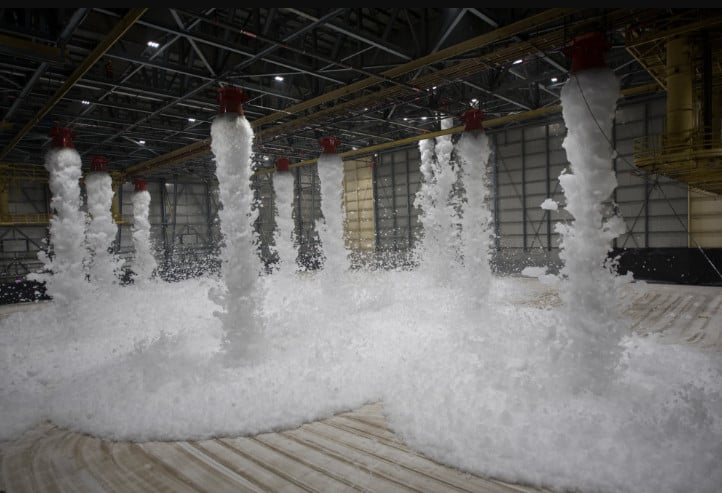
A revised Chapter 11 now covers foam fire suppression systems
Finally, the 2023 edition of NFPA 25 has a significantly expanded chapter that broadens the standard’s scope. Chapter 11 now covers foam fire suppression systems in addition to foam-water systems. These systems are typically used in aircraft hangars, petrochemical plants, tank farms, fuel-loading facilities, and power plants, and their installation rules are in NFPA 11: Standard for Low-, Medium-, and High-Expansion Foam (2021 edition).
This change reflects the fact that NFPA completely withdrew its previous standard, NFPA 16: Standard for the Installation of Foam-Water Sprinkler and Foam-Water Spray Systems, in 2020, combining those installation rules into NFPA 11. Thus, the installation and ITM rules for foam and foam-water systems are now consolidated into only two standards.
The revised chapter includes many topics, including general system requirements and an ITM schedule (11.1), inspection procedures (11.2), testing procedures (11.3), and maintenance procedures (11.4). There are far too many details to cover here. But it’s important to know that servicing a foam system is now covered in detail within NFPA 25.
NFPA 25 changes, but some ITM remains the same
The 2023 edition adds some directives, clarifies others, and has an entirely new chapter covering foam systems. Note that this piece doesn’t cover all of the NFPA 25 changes; it’s important to closely review specific sections governing a particular system, device, or ITM task. But our rundown includes what we think are some of the most interesting or impactful revisions.
Another important caveat that both building owners and ITM contractors should keep in mind: just because NFPA has issued an updated standard doesn’t mean it is legally enforceable in your jurisdiction. Various editions and versions of model codes adopted in different jurisdictions explicitly reference previous editions of NFPA 25 to conduct inspections, testing, and maintenance.
Nevertheless, if an updated 2023 rule is more favorable to a specific situation, building owners and fire protection professionals always have the option to make a case for complying with it to the authority having jurisdiction. NFPA’s standards give AHJs significant discretion in enforcing standards, and a newer section based on the latest data represents sound, safe fire protection.
If you need replacement parts to comply with NFPA 25, including fire sprinklers, escutcheons, cover plates, and other accessories, or testing and monitoring equipment, check out QRFS’s online inventory.
And if you have any questions or need help finding an item, contact us at 888-361-6662 or support@qrfs.com.
This blog was originally posted at QRFS.com/blog. If this article helped you, check us out at Facebook.com/QuickResponseFireSupply or on Twitter @QuickResponseFS.


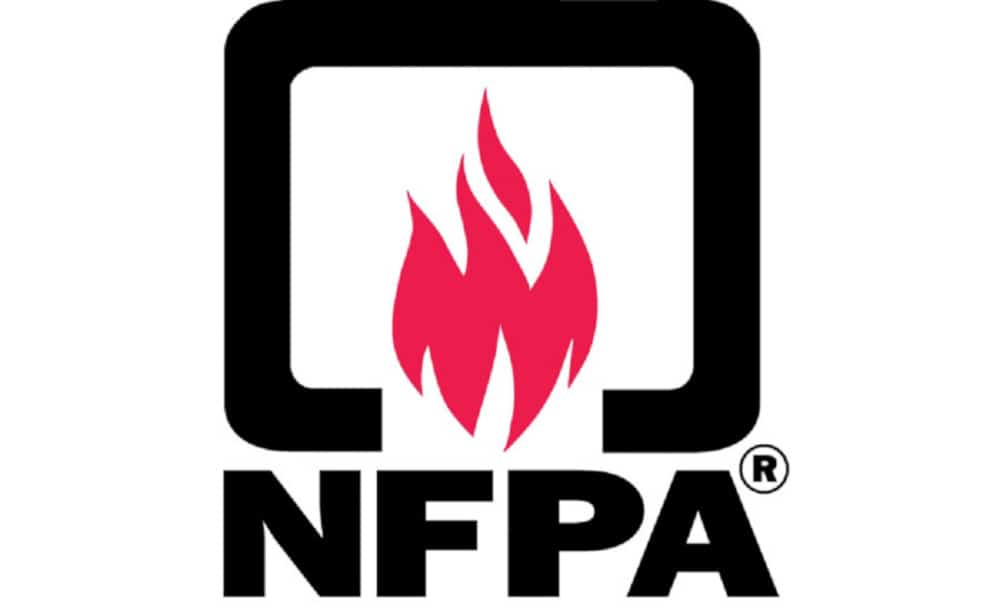
This information is really helpful thank you QRFS,
From now to the future I’m reading all the information,thank you again
Aristeo plaza
Warriors fire protection inc,
i enjoyed reading the updates. Thank you
Thank you, and thanks for reading, Dickie!